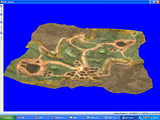Has anyone attempted to make a converter for H2V to H2X? I'm not saying it would be easy, but has anyone looked into it?
Just my thoughts!

Is there any method of doing run-time debugging? Is 2003 the only VS that allows tracking? Would you mind posting an tutorial on your methods?Grimdoomer wrote:Well if I can get Visual Studio 2003 to work correctly on anything I can give it a go and find exactly where the game crashes (if it does) and that at least gives a point of reference into the executable code. I don't think I will be able to get it to work using a Cisco switch though. For some reason xbox and xbox 360 consoles using DHCP through Cisco 2950 switches never seem to successfully get a DHCP lease from the default gateway. I have to log into the switch and see how the ports are configured, but I might just attach a dumb hub up for now and see what happens -_-
I uncovered most of the information for these already (I know some sections are incorrect, but very close):Grimdoomer wrote:On an unrelated note, while doing some research on the unicode tables and unic tags I got side tracked with reverse engineering how the font files work. So expect some information on those in the future.
Visual Studio 2003 does allow runtime debugging with the xbox sdk installed. You need the debug bios and dashboard running on your console. Once you do you simply open visual studio and go to Tools->Debug Processes, and select Xbox Consoles, and then your console.troymac1ure wrote: Is there any method of doing run-time debugging? Is 2003 the only VS that allows tracking? Would you mind posting an tutorial on your methods?
I know, I was using it as a reference. But I like to find out exactly how the game does things :ptroymac1ure wrote: I uncovered most of the information for these already (I know some sections are incorrect, but very close):
viewtopic.php?f=85&t=2267
I tried it years ago, you either crash or you pass through the map.troymac1ure wrote:Right. I found a post from Kornman stating that later on (I think I spent 1-2 hours reading previous posts throughout the span of Entity's thread). Although the NifTools creators state that you can get their maps to load if you have blank MOPP or just a bounding box defined in MOPP (but I think they said it was laggy).
Has anyone tried to remove the MOPP data completely and see what happens?
Well that's a good start. We could forget the MOPP data and just inject visual meshes. Then use the box method to create physics collision. We still need to create a BSP tree for the visual though or it lags out I think.neodos wrote:I tried it years ago, you either crash or you pass through the map.troymac1ure wrote:Right. I found a post from Kornman stating that later on (I think I spent 1-2 hours reading previous posts throughout the span of Entity's thread). Although the NifTools creators state that you can get their maps to load if you have blank MOPP or just a bounding box defined in MOPP (but I think they said it was laggy).
Has anyone tried to remove the MOPP data completely and see what happens?
If i recall the bsp has multiple collision meshes, one for projectile other for physical collision and player colliders, I don't remember if there was a third, I was able to successfully modify the projectile collision mesh, but the physics collision mesh depends on the mopp code which is necesary for the physics collision to work.
If you edit the physics collision mesh you'll basically pass through the modified faces if you move them too far from their original positions.
I guess you need the mopp to be recalculated for that mesh, how its recalculated is the mystery since we don't know what version of Havok Bungie used for H2, for all we know they might just have modified Havok themselves.